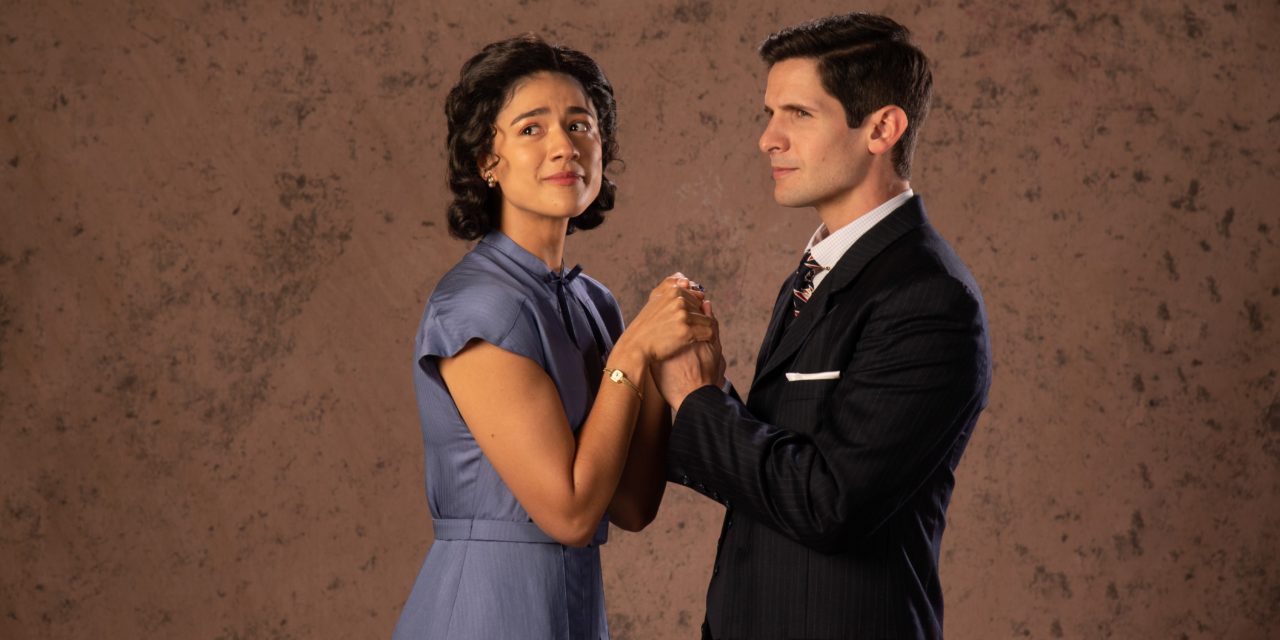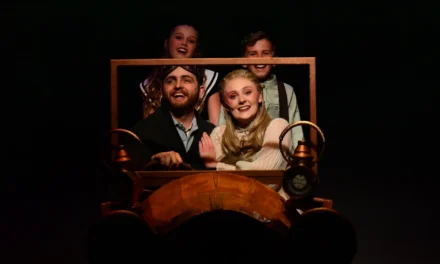CEDAR CITY — The Utah Shakespeare Festival’s production of All’s Well That Ends Well is not good, and it is not bad. It just exists.

Show closes September 8, 2022.
All’s Well That Ends Well might have the most unappealing storyline of any Shakespeare‘s comedies. Helen, the daughter of a deceased physician, loves Bertram, who is the Count of Rosillion. However, he spurns her because of her status as a poor commoner. After Helen uses her late father’s medicines to cure the King of France’s fistula (an open sore that often exudes puss), he allows Helen to choose any bachelor in his court as a husband. She chooses Bertram, who reluctantly weds Helen, but refuses to consummate the marriage or live with Helen as husband and wife. He claims that he will treat her as a wife only if she can obtain his ring (a family heirloom for six generations) and carry his child. He then sends her to his home and flees to Italy to serve as a mercenary and to spend his free time womanizing. Helen then takes matters into her own hands and uses subterfuge to meet Bertram’s conditions.
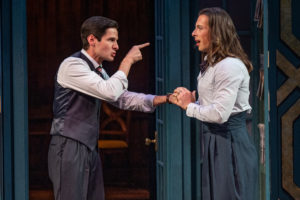
Left to right: Philip Orazio as Bertram and Kevin Kantor as Paroles in the Utah Shakespeare Festival’s 2022 production of All’s Well That Ends Well. (Photo by Karl Hugh. Copyright Utah Shakespeare Festival 2022.)
It is no wonder All’s Well is often classified as a “problem play.” The story inverts traditional Shakespearean comedy. For example, the marriage occurs (offstage) at the beginning of the play — not the end. Like other comedies, there is trickery involved in achieving a happy ending, but it is not the lighthearted, fun trickery engineered by outside characters (as seen in A Midsummer Night’s Dream or Much Ado About Nothing). Instead, Helen herself must trick Bertram in a rather distasteful manner.
Director Melinda Pfundstein has set the play in 1930s Europe, though I cannot ascertain why. The time period does not seem to have any special connection to the action, and the change does not improve or damage the show in any way. Pfundstein’s most noticeable innovation is creating a twist on the character Paroles (played by Kevin Kantor), who is upgraded from a mere “follower” to an intimate companion to Bertram. The choice to give the character homoerotic characteristics has some foundation in the text, but it is slim. But like the change in setting, it does not illuminate the play or deepen the character. Hampering this directorial choice is Kantor’s shallow performance, which consisted mostly of affected, overexaggerated mannerisms that were flamboyant without revealing anything interesting about the character.
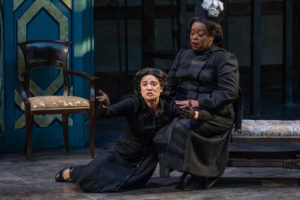
Kendall Cafaro (left) as Helen and Yvette Monique Clark as Countess of Rossillion in the Utah Shakespeare Festival’s 2022 production of All’s Well That Ends Well. (Photo by Karl Hugh. Copyright Utah Shakespeare Festival 2022.)
With the directorial focus on Paroles, the fundamental problem of staging the play remained: how to make Bertram appealing. In the script, he is described as a “foolish, idle boy,” and Bertram’s scornful attitude towards the devoted Helen, his lies, and infidelity make him a loathsome character. Philip Orazio gives a fine technical performance as Bertram. Orazio is a true professional in his acting, whether it is in the tense body language when Helen chooses Bertram as a husband, or his confidence in delivering lines when Bertram decides to flee to Italy. But nothing he does improves the character or makes Bertram’s behavior more palatable.
Kendall Cafaro’s performance as Helen is more enjoyable, mostly because her character is far more sympathetic than Bertram. But the question of why Helen finds Bertram worth pursuing — especially after he mistreats and abandons her — is never answered. Cafaro’s best moment is a soliloquy when Helen pours her heart out after being rejected by Bertram. Cafaro has the emotion and passion to play a Shakespearean heroine. I just wish she could show off her talents in a better play.
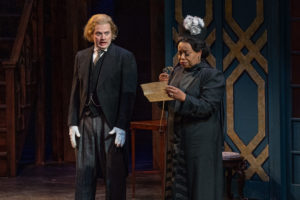
Michael Doherty (left) as Lavatch and Yvette Monique Clark as Countess of Rossillion in the Utah Shakespeare Festival’s 2022 production of All’s Well That Ends Well. (Photo by Karl Hugh. Copyright Utah Shakespeare Festival 2022.)
The rest of the cast gives similar performances: neither remarkable, nor terrible. The exception is Michael Doherty as the clown Lavatch. Doherty brought energy and humor to every scene, and I often yearned for him to return to the stage to liven up the show.
Like most of the performances and the direction, the technical elements are fine, though nothing memorable. Costumes (designed by Lauren T. Roark) are elegant for the noble characters and functional for the soldiers. The shift to a more colorful palette when the action shifts to Italy is a welcomed change after the dreary opening scenes in France. The set (designed by Linda Buchanan) is limited — as is the nature of sets in the Engelstad Theatre (which must conform to a layout similar to the stage at Shakespeare’s original Globe Theatre). But Buchanan still managed to create some nice textures, hinged pieces, and splashes of teal that are unusual in the space. The lighting design by Stephen C. Jones got the job done in a satisfactory manner.
Indeed, almost everyone involved with All’s Well That Ends Well seems to be going through the motions. Perhaps this is because the production is part of the Utah Shakespeare Festival’s Complete the Canon initiative, in which the company plans to mount every Shakespeare play over the course of a decade. The production has the feel of being an exercise in checking off a box. Still, mounting any play is an accomplishment, and I admire the cast, director, and crew for trying their hand at a challenging script.

This review is generously supported by a grant from the Utah Division of Arts and Museums.

